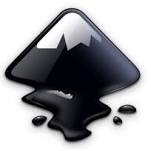Here you can see videos with some of the projects students of 3º ESO have made. The requirements were to design and build something automatic that includes mechanisms.
The first video shows an automatic barrier that is closed all the time unless an object stays in front of it. At that point, the barrier opens and remains open till the object has gone. Then it closes again.
María, Francisca, Alba, María and Sergio have used the circuit you can see below. The sensor is a LDR, located on the floor in front of the barrier. When we cover the LDR, the transistor changes from cut off into saturation. That way we activate the relay connected to the collector, so that the way the motor rotates changes. When the barrier presses the limit switch at the end of the opening movement, the motor stops.
If the LDR is not covered, the transistor returns to cut off, so the electromagnet of the relay doesn't attract the changeover switches. Then the way the motor rotates changes, and the barrier closes. At the end of the closing movement there is another limit switch that makes the motor stop.
Silvia, Francisca, Beatriz, Alba and Amara have made a similar project but in this case the motor rotates in the opposite way.
Some other groups have chosen an easier circuit, the one you can see below, with a LDR activating a motor but only in one direction.
Jorge, Roberto, Nico, Tobías and Jorge have used this circuit to make up a car that moves only when it receives light.
Rodrigo, Jorge, Ángel, Lidia and Alina have used also the same circuit to build a mill that rotates when it receives light, but not when we cover the sensor placed on the roof.
 Inkscape is a professional vector graphics editor for Windows, Mac OS X and Linux. It's free and open source.
Inkscape is a professional vector graphics editor for Windows, Mac OS X and Linux. It's free and open source.








